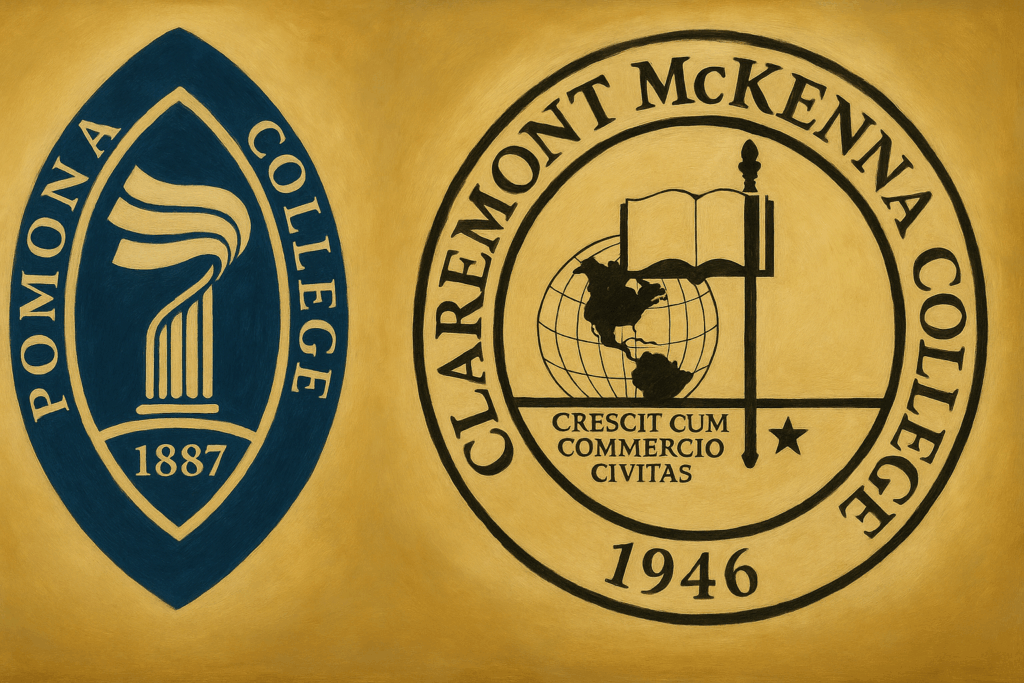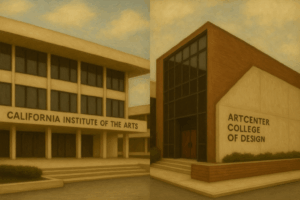
The GOAT of West Coast Liberal Arts Colleges?
The Claremont Colleges, nestled in the city of Claremont, California, represent one of the most unique and successful models in American higher education. Inspired by the University of Oxford, this system consists of five top-tier undergraduate liberal arts colleges and two graduate universities.
The core appeal of this system is that students can enjoy the benefits of a small college—close relationships with professors and an intimate sense of community—while also having full access to the vast academic resources and social opportunities of a large comprehensive university.
However, even within the confines of the consortium, the rivalry between two colleges stands out: Pomona College and Claremont McKenna College (CMC). These two institutions share the consortium’s prestige while attracting future leaders with their distinct missions, cultures, and ideal student profiles.
This article will serve as a definitive guide for students deliberating between these two prestigious liberal arts colleges, offering an in-depth analysis of their fundamental differences.
1. Pomona vs. CMC: Core Identities at a Glance
The two colleges have developed distinct identities, playing complementary roles. If Pomona is a haven for academic exploration pursuing the ideals of a traditional liberal arts education, CMC is a cradle for nurturing talent for pragmatic leadership.
| Feature | Pomona College | Claremont McKenna College (CMC) |
|---|---|---|
| Year Founded | 1887 | 1946 |
| Founding Philosophy | To establish a “New England-type college” in the American West. | To prepare students for leadership roles in business, government, and the professions. |
| Motto | No official motto (Focuses on mission statement). | “Crescit cum commercio civitas” (Civilization prospers with commerce) |
| Key Academic Focus | Broad liberal arts: humanities, social sciences, natural sciences. | Concentrated in economics, government, international relations, public policy. |
| Campus Vibe | Intellectual, collaborative, creative, socially engaged, research-oriented. | Pre-professional, ambitious, extroverted, leadership-oriented. |
| Core Keywords | #LiberalArts #Interdisciplinary #Collaboration #Diversity #IntellectualCuriosity | #Leadership #Economics #Government #Finance #Networking #PracticalApplication |
2025 Key University Rankings
Both colleges are ranked among the very top liberal arts colleges in the United States, standing on equal footing in terms of academic reputation. This means that rather than trying to determine which is superior by rank, you should focus on finding the ‘best-fit school’ for your disposition and goals.
| Ranking Body | Pomona College Ranking | Claremont McKenna College Ranking |
|---|---|---|
| U.S. News & World Report (2025) | 5th (tie) | 8th (tie) |
| Forbes America’s Top Colleges (2025) | 37th | 19th |
2. History and Founding Philosophy: Tracing the Origins of Two Intellects
The distinct differences between the two colleges stem from their different historical contexts and founding purposes.
Pomona: The Ideals of New England Take Root in the West
In 1887, Pomona College was born under the idealistic vision to “establish a college of the New England type in the American West.” The goal was to help students grow into well-rounded individuals with a broad liberal arts education and critical thinking skills.
A turning point in Pomona’s history was the innovative idea of its fourth president, James A. Blaisdell. Like the universities of Oxford and Cambridge, he envisioned the Claremont Consortium model, where several independent colleges share resources. Thanks to this decision, Pomona can, to this day, enjoy both the intimacy of a small college and the resources of a large university. Pomona’s history is, in itself, a process of striving to protect and advance the ideals of a liberal arts education.
CMC: The Cradle of Pragmatism, Born for Leadership
CMC was founded in 1946, immediately after World War II, to educate returning servicemen. Its founding purpose was clear and practical:
“To prepare students for thoughtful and productive lives and responsible leadership in business, government, and the professions.”
This philosophy is clearly reflected in the college’s motto, “Crescit cum commercio civitas” (Civilization prospers with commerce). Under the strong belief that education must contribute to the practical development of society, CMC has focused on social sciences like economics and government from its inception, staying true to its core mission of ‘cultivating leaders.’
3. Academic Atmosphere and Campus Culture: Two Shades of Intellect and Passion
Their different histories and philosophies are directly reflected in their campus cultures.
Pomona: A Community of Intellectual Curiosity and Free Exploration
Pomona’s culture can be summarized in two words: ‘intellectual curiosity’ and ‘collaboration.’ Students explore across disciplines without being confined by their majors and value cooperation over competition. Pomona students express their culture through unique traditions like these:
- The Mystery of ’47’: A playful and intellectual humor where a special meaning is attached to the number 47, and students find it everywhere on campus.
- ‘Cup Dropping’: When someone drops a cup in the dining hall, all other students drop their cups in unison, covering the student’s mistake with a collective noise, showcasing a non-hierarchical community culture.
CMC: Ambition, Networking, and Nights at the Athenaeum
CMC’s culture is characterized by ‘ambition,’ ‘leadership,’ and ‘networking.’ Students have a clear goal of becoming socially influential leaders, and the campus actively supports this.
The essence of CMC culture is the Marian Miner Cook Athenaeum. Four nights a week, students dine with and freely debate renowned leaders from various fields, including politicians, entrepreneurs, and artists. Here, students learn to introduce speakers and lead discussions, naturally acquiring the skills to interact with leaders as equals. The Athenaeum is a microcosm of CMC’s educational philosophy of cultivating practical wisdom and relationship-building skills through direct interaction with real-world leaders.
4. Alumni Who Move the World: A Comparison of Representative Figures
The figures produced by the two colleges clearly reflect their respective educational philosophies.
Pomona College: Artists and Scholars with Creativity and Depth
Pomona’s free academic atmosphere has produced numerous individuals who have enriched the world in the fields of arts, humanities, and sciences.
| Name | Field | Key Achievements and Significance |
|---|---|---|
| Kris Kristofferson | Music, Film | Grammy-winning singer-songwriter, Golden Globe-winning actor. |
| Robert Shaw | Music | A legendary conductor who won 14 Grammy Awards. |
| Robert Towne | Film | An Academy Award-winning screenwriter for ‘Chinatown.’ |
| John Cage | Music | An experimental composer who represents 20th-century avant-garde music. |
| George C. Wolfe | Theater | A renowned playwright and director who has won two Tony Awards. |
CMC: Leaders Who Move Finance, Politics, and Business
True to its founding purpose, CMC has consistently cultivated giants in the worlds of finance, politics, and business.
| Name | Field | Key Achievements and Significance |
|---|---|---|
| Henry Kravis | Finance | Co-founder of the global private equity firm KKR. |
| George R. Roberts | Finance | Co-founder of the global private equity firm KKR. |
| Julie Sweet | Business | CEO of the global consulting firm Accenture. |
| Douglas Peterson | Finance | President and CEO of S&P Global. |
| Michael Arrington | Technology, Media | Founder of the global tech media outlet ‘TechCrunch.’ |
Conclusion: Where is Your Future Headed?
Ultimately, the choice between these two colleges is a process of introspection about your own disposition and vision for the future. It’s not about which one is superior, but about who you want to become.
Two Great Workshops
- Pomona is like an ‘intellectual playground,’ a workshop equipped with all the tools of the world, encouraging you to create whatever your heart desires. It is a space for future scholars, artists, and scientists.
- CMC is like a ‘leadership academy,’ a workshop that provides the best tools needed for a specific craft and expects you to become a master in that field. It is a space for future CEOs, policymakers, and financial experts.
Before asking which workshop is better, you must first ask yourself what you want to create.
Does your passion lie in pure intellectual exploration, or in leadership that exerts a practical influence on the world? Depending on your answer, the right college for you will become clear.


